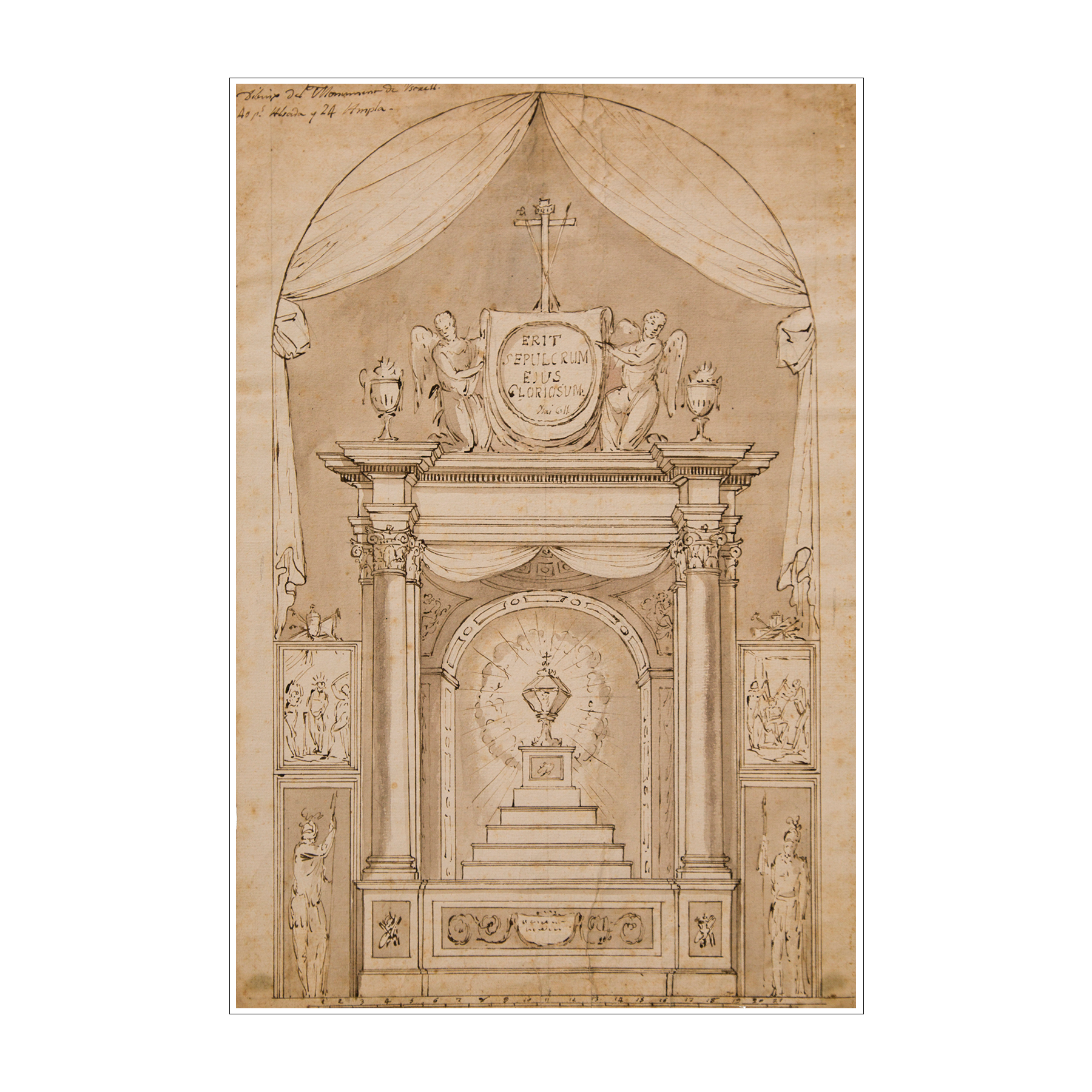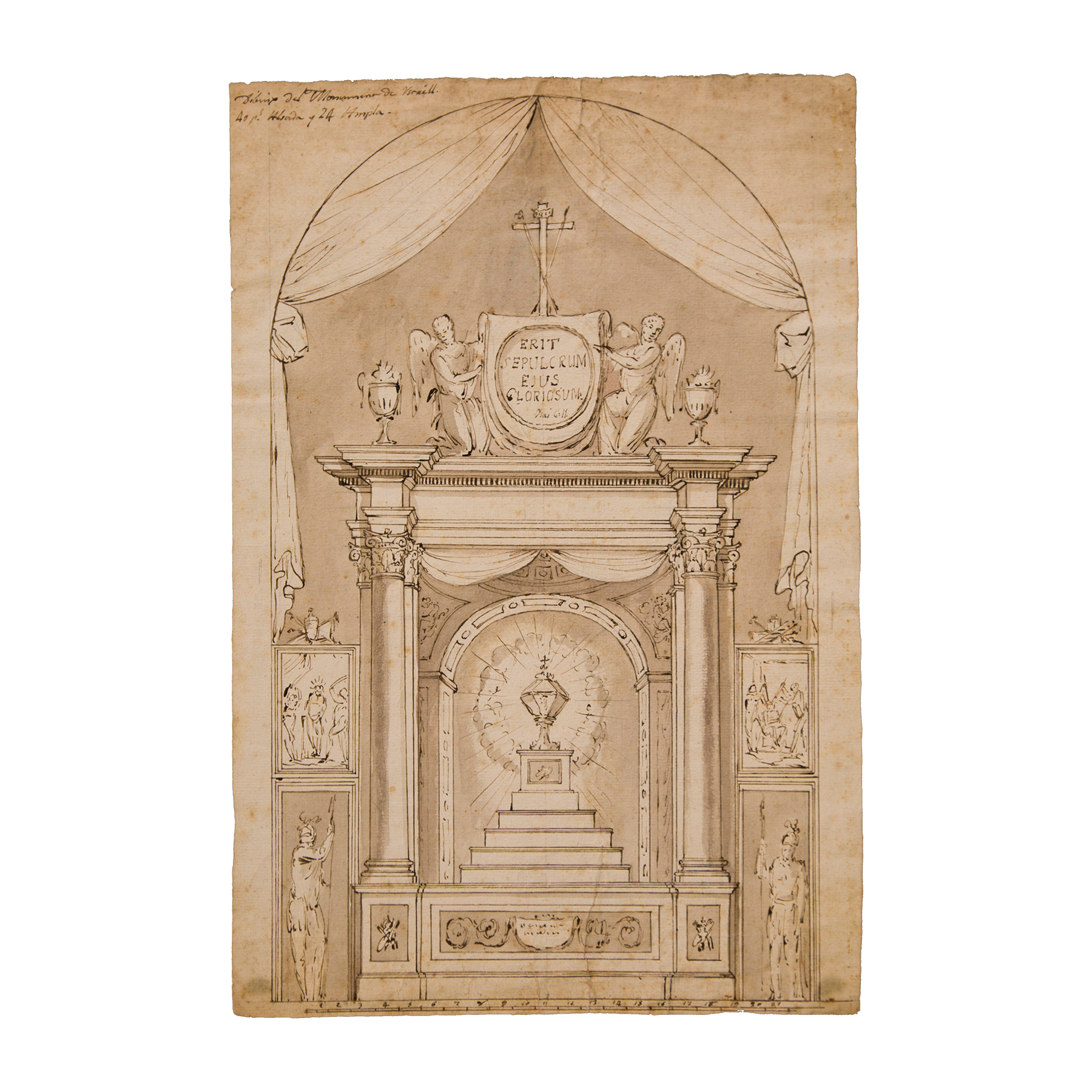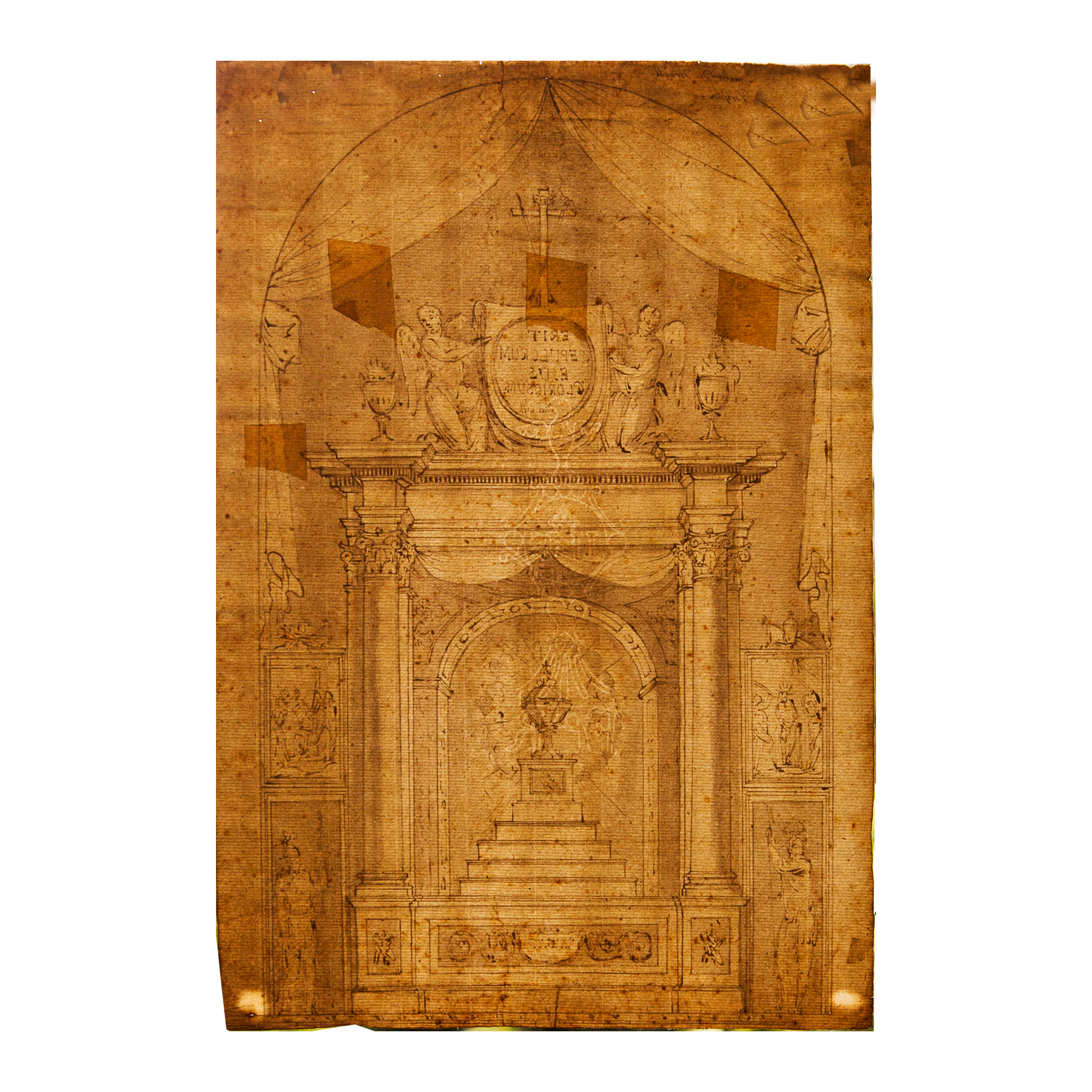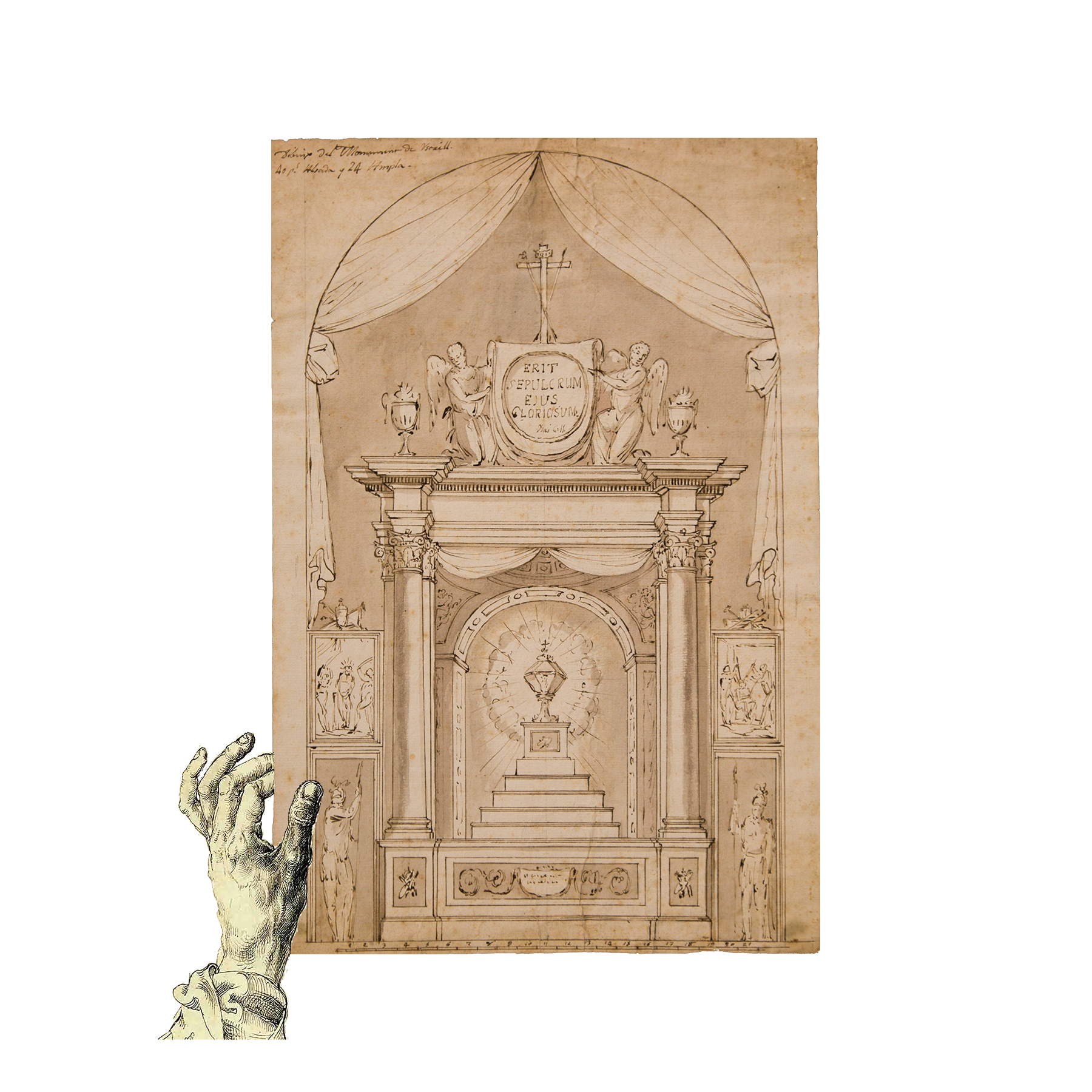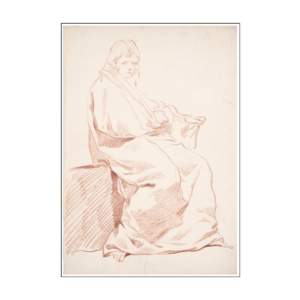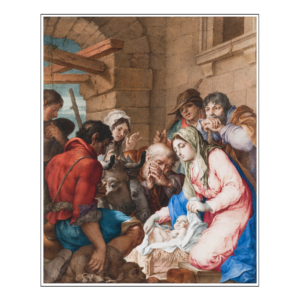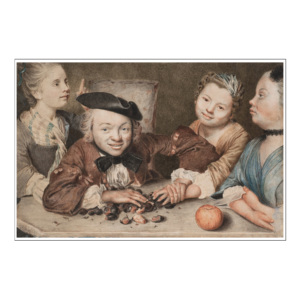18th century Spanish School
Study for an altar
Pen and brown ink, brown and gray wash on pencil lines.
415 x 277 mm – 16 5/16 x 10 7/8 in.
Watermark: IHS in coat of arms surmounted by a bird ( around 1750 ).
inscribed with the pen and black ink, top left : Dibujo del monument Us (. ) ll / 40 ps Alsada y 24 Ampla.
Provenance : – Munich, Karl & Faber, Sale November 8, 2013, n ° 418.
This drawing, of great finesse and precision of execution, illustrates the architectural and decorative project of an altar intended to exalt the Eucharistic triumph in a chapel dedicated to the Holy Sacrament. This Renaissance-style altar, the base of which has a frieze in the central part and on either side of it, is framed by three Corinthian columns on which rests a entablature dominated by two angels presenting a cartridge with the Latin inscription “ERIT / SEPULCRUM / EIUS / GLORIOSUM / Ysai C. 11”. Taken from Book of the Prophet Isaiah ( ch. 11.10 ), its French translation means « Its sepulcher will be glorious ». In the center of the altar, built on a base with five steps, sits a ciborium containing the consecrated Host, symbol of the body of Christ risen from the dead. The side walls, in their upper part, reveal two representations linked to the Passion of Christ: on the right, a scene evoking the Christ to Outrages and, on the left, the scene of The Flagellation. According to the inscription written in Spanish, with a pen and black ink, at the top left of the sheet, we can assume that this altar project was designed by a Spanish artist for a church in an Iberian region although we were unable to read the name of the place mentioned.
Condition report – Good general condition.
